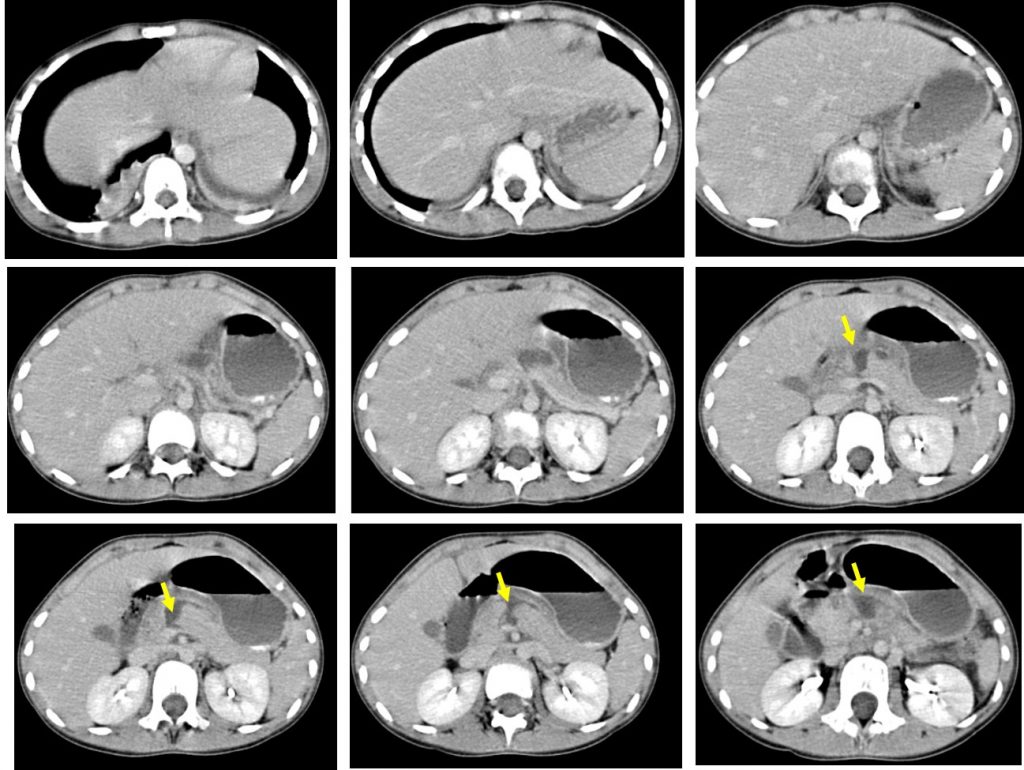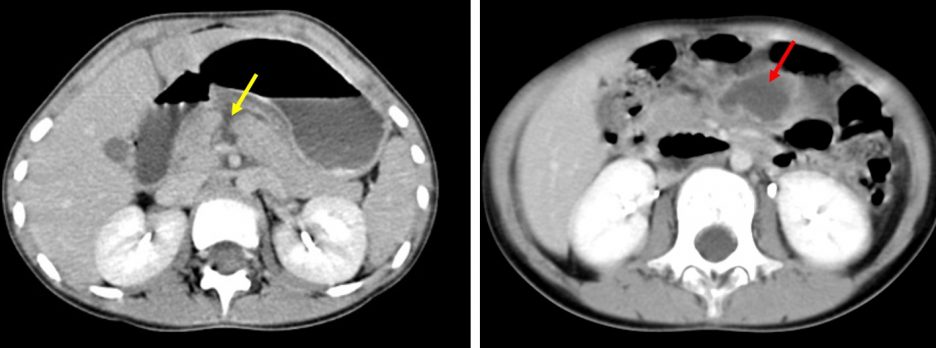Case contribution: Dr Radhiana Hassan
Clinical:
- A 9 years old girl, no known medical illness
- Fall from a bicycle, had bleeding and laceration at forehead
- Wound sutured and discharged home
- Mother noted bruises at the epigastric region
- Developed abdominal pain, vomiting and low grade fever
- Ultrasound done reported as no solid organ injury
- Referred for further management
- BP=100/54 mmHg, PR=102 bpm, GCS=15/15

CT scan findings:
- There is a laceration at body of pancreas (yellow arrows)
- The laceration extends and involving the pancreatic duct
- Minimal peripancreatic fluid
- No other organ injury seen
Progress of patient:
- Patient was managed conservatively
- Follow up CT scan shows small pseudocyst
- Another follow up after 2 months shows larger cyst
- A percutaneous drainage was performed


Diagnosis: Post traumatic pancreatic pseudocyst
Discussion:
- Pancreatic pseudocyst occurs from disruption of pancreatic duct structure resulting in leakage and accumulation of pancreatic fluid and hemorrhagic fat necrosis.
- It is called pseudocyst as it is not lined by epithelium, but severe inflammatory reaction resulting in encapsulation of the cyst by fibrosed granulation tissue.
- On imaging it is fluid-filled structure of collection with relatively thick wall. It can be multiple and most commonly located in the pancreatic bed.
- A unilocular cyst with clinical history of trauma or pancreatitis is almost always a pseudocyst.
- It is not possibleto differentiate infected from non-infected pseudocyst on imaging alone.
- It may regress on its own with no further treatment. However, interventions are required in selected cases such as infected cyst, large size causing compression effect and symptomatic and recurring cyst.
